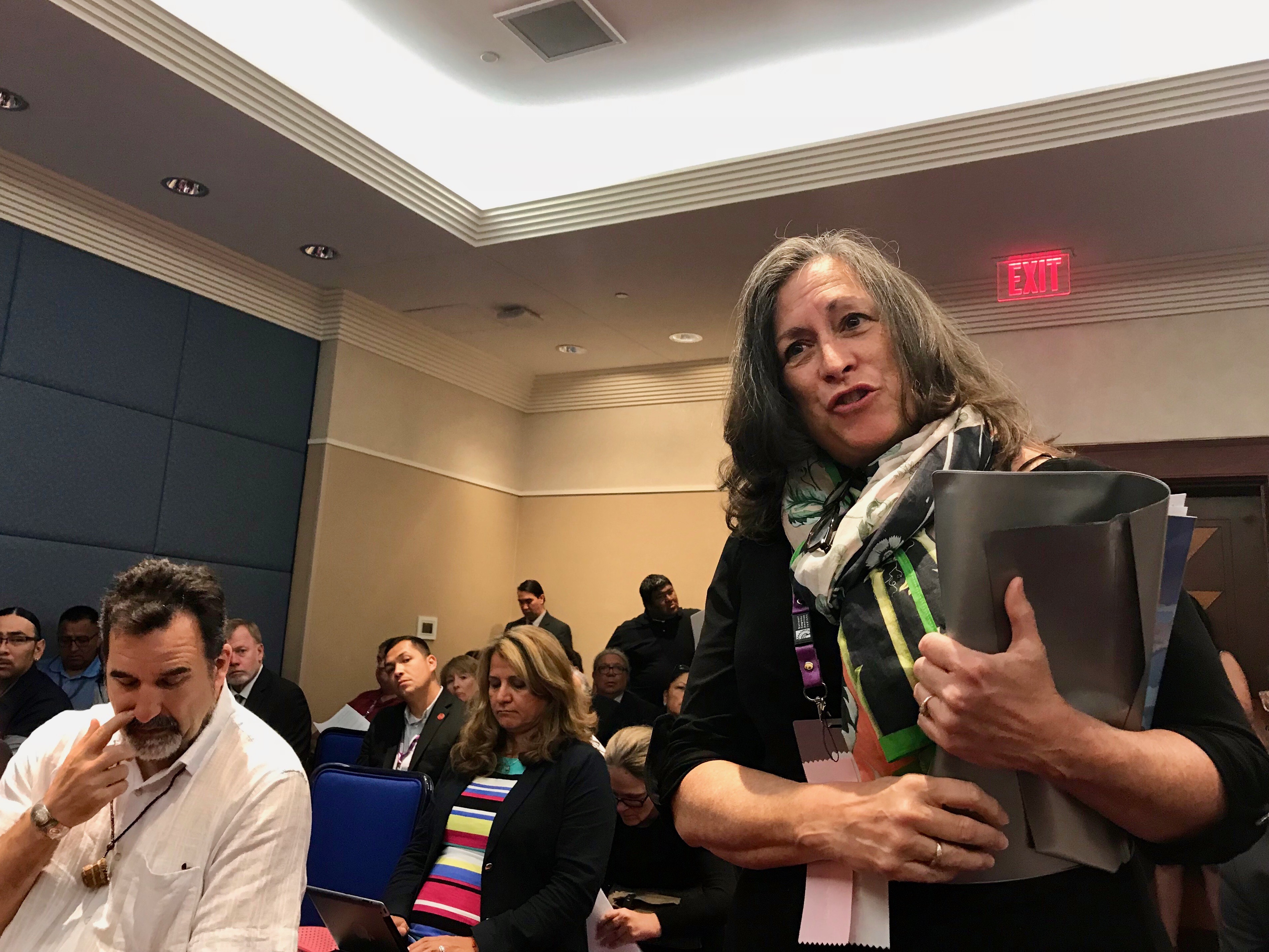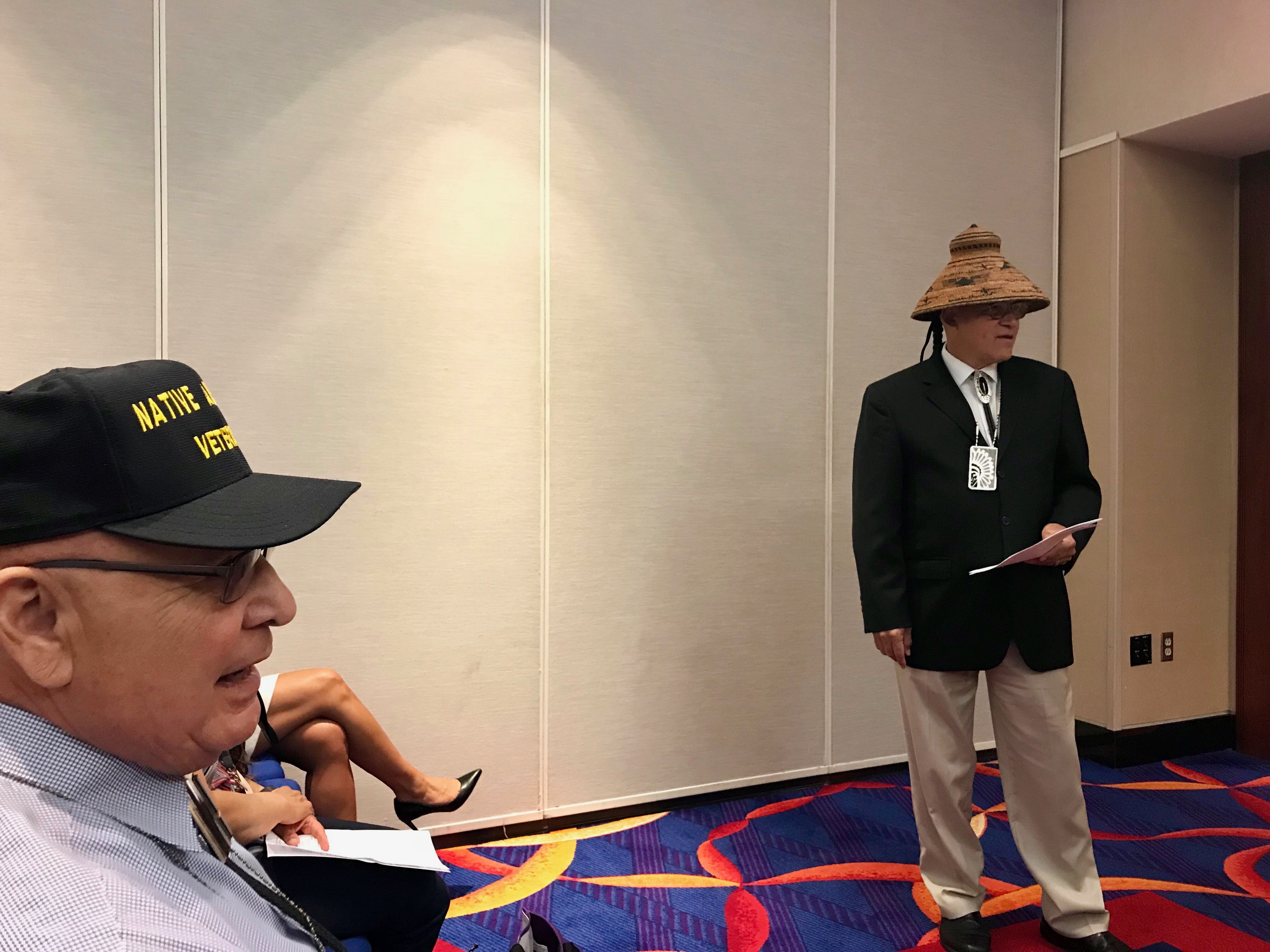
Still, the reactions -- all unanimously negative -- aren't likely to diminish Zinke's reception at NCAI. He's making his first speech to the organization since joining the Trump administration in March and so far he has been treated warmly by elected leaders in Indian Country. But tribes warned that the tide may turn unless Zinke responds to their complaints. NCAI Brian Cladoosby reminded attendees of an extremely controversial attempt to split up the Bureau of Indian Affairs during the first year of the Bush administration back in 2001. “It is an understatement to say that working with the tribes tribes at the beginning is a lot better than coming up with something and trying to shove it down our throats,” said Cladoosby, who also serves as chairman of the Swinomish Tribe. Ron Allen, the longtime chairman of the Jamestown S'Klallam Tribe and the treasurer of NCAI, was among the most critical of the new undertaking. He said the department needs to send a strong message to the White House about the need for more resources at the BIA but the lack of information from the administration makes it difficult to come up with solutions. “We’re responding to a proposal we haven’t seen,” said Allen, who was a prominent opponent of the Bush-era reorganization.

Mike Black, the "acting" leader of the BIA, acknowledged the lack of guidance from Washington, D.C. So far the agency has only held a series of listening sessions -- which are not considered tribal consultations -- but hasn't disseminated any information about any changes. “We have no plan,” said Black, who is a citizen of the Oglala Sioux Tribe. “I want to hear from you.” At the same time, he said President Donald Trump has ordered all federal agencies, Interior included, to submit a reorganization report in September, so the process is moving forward regardless of its reception in Indian Country. After that, he isn't sure whether there will be true government-to-government consultations. Black knew even less about the Trump-ordered review process for national monuments like Bears Ears. None of the representatives of other Interior agencies who participated in the session had answers either. As a result, “it's impossible to have a discussion,” asserted D. Bambi Kraus, the president of the National Association of Tribal Historic Preservation Officers, which has strongly advocated for tribal inclusion in the development and designation of monuments. The way the Trump team has handled the process gives off the strong impression that “it's a political decision,” said Kraus, who is Tlingit from Alaska. “It's kind of stunning.” Zinke isn't coming to NCAI alone -- Jim Cason, the newly-named Associate Deputy Secretary at Interior, is also in Connecticut for the conference. Cason served in the same role during the Bush administration, whose relationship with tribes was shaky at best. And, despite touting his appearance three weeks ago, Zinke is only going to be at the event for a couple of hours. After his speech in the morning, he has to quickly get to New Hampshire for a sportsmen-related event in the afternoon. On Wednesday, Zinke is traveling to Maine for a visit to the Katahdin Woods and Waters National Monument, another landmark on Trump's target list. Then on Thursday he is scheduled to meet with leaders of the Penobscot Nation.
Join the Conversation
Related Stories
National
Congress of American Indians opens mid-year conference (June 12, 2017)

